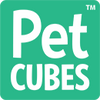Shopping Cart ( )
Your cart is currently empty.
Did you know that an adult dog requires only 0.17g of sodium (per 1000kcal) in a day?
That’s right! An overabundance of salt will cause excess sodium in their blood, causing hypernatremia, a condition in which cells have an imbalance of electrolytes. In mild conditions, it could cause overheating or dehydration. If serious, it could be fatal. Here are some tips for dog owners who need to put their dogs on a low sodium diet.
 Photo by Karsten Winegeart on Unsplash
Photo by Karsten Winegeart on Unsplash
The immediate way to lower your pet’s sodium level is to stop serving salty treats and stick to low sodium dog food. You can vary salt levels from moderate (0.2%) to higher reduction (more than 0.25%). For dogs with congestive heart failure (CHF), sodium levels should be lowered to 0.1%.
Your veterinarian may recommend reducing your canine’s sodium intake if it has any kind of heart, kidney or liver disease. These diseases are more prevalent in senior dogs. Healthy dogs who can regulate their salt levels do not require a reduced or low sodium diet.
No dogs are the same so consider these factors when choosing low sodium dog food.
The Association of American Feed Control Officials (AAFCO) guideline states that the minimum sodium required for an adult dog is 0.08%and 0.3% for a canine in its growth and reproduction stage. Kibbles that contain sodium slightly below this range are considered as low sodium.
You can check the sodium level on the dry dog food packaging to determine if it matches the low sodium dog food criteria.
Wet dog food has low sodium thanks to its moisture content. It helps to dissolve the salt content in the food. This also makes it easier for your dog with teeth or mouth conditions to chew. However, it tends to have higher fat and protein than dry dog food.
Older dogs may require low sodium diets because they are more prone to suffer from muscle or nerve issues. Excessive sodium can cause movement restrictions and pain in dogs. Lowering their sodium intake can help to avoid the worsening of these conditions and overcome present signs.
Overweight dogs may experience difficulty absorbing salt, causing water retention. As a result, a low sodium diet is necessary. Healthy puppies and dogs with normal weight should continue with their usual diet.
While the majority of dogs do not mind the texture or taste of food with low sodium, you may need to try a few types if your dog is a picky eater
A balanced diet is vital for your dog to maintain a healthy lifestyle. Ensure that the low sodium food contains high quality protein, fatty acids, carbohydrates, amino acids, vitamins, and minerals. Petcubes’ dog food collection can cater to your dog’s need for a nutritious and balanced diet.
If your dog needs a low sodium diet, here are some foods and ingredients that you should avoid:
Artificial additives such as monosodium glutamate (MSG), artificial colourings, dye, and flavorings may contain high levels of sodium. This may cause harm to your dog and do not contain any nutritional value.
Sodium nitrate is a preservative used in processed foods like ham, jerky, and bacon. It contains a high level of salt that can elevate your dog’s sodium level.
Many foods that we eat, for example, bacon, pizza and potato chips have high processed sugar and salt that are not healthy for canines.
Many dog treats on the market contain high levels of sodium. Ensure that the treats you give your dog do not contain too much salt by checking nutrition and ingredient labels before purchasing.
When your dog has high blood pressure (hypertension), its blood vessels constrict and become too narrow to support the increased blood flow pressure and may therefore burst. The best dog food for heart health contains low sodium that can help to maintain its blood pressure and prevent such issues.
Low sodium diets can aid in fending off heart problems such as congestive heart failure (CHF) and strokes.
The best low sodium foods for weight loss should not only be low in sodium, it should also be low in fat and calories and contain high quality protein. This ensures that your dog does not put on weight due to extra calories while ensuring it still has sufficient protein to build and maintain its muscle mass.
Highly processed foods also tend to have a higher sodium content compared to raw, natural foods. To avoid the unnecessary extra sodium intake from processed food, make sure that you check the nutritional facts on the packaging before feeding it to your dog.
If your pup needs to lose some weight, you can read more about getting it on a suitable diet plan for overweight dogs here.
Not sure how to choose the best low sodium dog food? Always look at the guarantee analysis labelling. Most products will state the minimum percentage levels for minerals such as sodium, phosphorus, and calcium. Note that the level of salt is lower in wet food due to its moisture content between 75% to 78% as compared to dry food moisture of approximately 10% to 12%. Ideally, check with your veterinarian before making any changes to your dog’s diet.
You have no items in wishlist.
| Title |
|---|
| Price |
| Add to cart |
| Type |
| Vendor |
| Title |
|---|
| Price |
| Add to cart |
| Type |
| Vendor |

